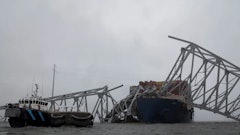The outlook for your construction business in the New Year seems to hinge on what type of activity you're most focused upon. For those of you involved in non-residential construction, the future looks bright. But if your focus is on land clearing or support services (i.e., utility installation or street work) for residential developments, you may find the outlook growing dimmer by the minute.
Throughout 2006, housing starts experienced a steady decline, dropping to numbers well below 2005. Much of this decline is due to inventory correction — the aftermath of a building frenzy during the previous two years. Some economists believe the market won't hit bottom until late 2007, with a subsequent rebound by late 2008.
Non-residential construction, on the other hand, has seen sustained growth through much of 2006. According to Ken Simonson, chief economist, Associated General Contractors of America, spending in private non-residential construction was running 10% to 12% ahead of last year, and this momentum is likely to continue in 2007.
Despite what appeared to be a relatively flat fourth-quarter finish for 2006, non-residential construction saw strength in many areas. Simonson cites the following examples, based on October numbers:
- lodging construction (hotels and resorts) jumped 70%;
- multi-retail (i.e., shopping centers, malls and other general merchandise stores) rose 36%;
- private electric power construction was up 26%;
- Private hospital construction increased 23%;
- new multi-family construction saw a gain of 15%;
- total public construction increased by 16%.
"Of the two big public construction categories, highway and street construction was up 16% year-to-date and educational had a 7% pickup," Simonson notes. "Other large components with gains included sewage and waste disposal, up 20%, and transportation facilities, up 7.5%."
Altogether, transportation spending achieved a 20-year high, hitting roughly $106 billion, up from $92 billion in 2005. And while the American Road & Transportation Builders Association forecasts only a 1% to 2% gain for highway and bridge construction in 2007, increased airport construction activity could push total transportation spending further above 2006 levels.
Overall, Simonson believes each of the non-residential categories cited should see continued strength. "I believe the economy is still fundamentally strong, and the housing slide will have limited impacts on other segments," he states. "Going forward, I think there is still plenty of life left in hotel, hospital, energy-related and public spending. But single-family home construction will remain in free-fall for several months."
As in 2006, however, the wild card will be materials costs. "Cost increases should moderate in the next few months, but materials costs will still outrun overall inflation," Simonson predicts. Current estimates show a potential 6% to 8% overall increase in 2007.
By anticipating this increase — and incorporating it into your bid structure — you should be able to mitigate its potential impact, and thus maximize your firm's profitability throughout the months ahead.


























